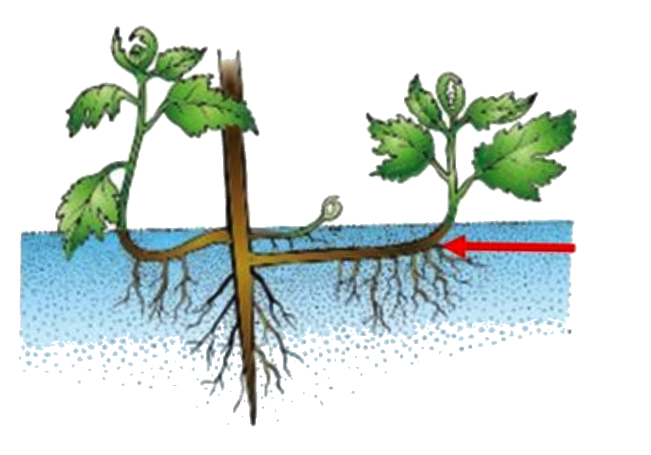How do the various leaf modifications help plants?
Step-by-Step Solution:
1. Understanding Leaf Structure:
- Leaves are primarily composed of three parts: the leaf base (attachment to the stem), the petiole (leaf stalk), and the leaf blade (lamina).
- The primary function of leaves is to carry out photosynthesis, converting sunlight into energy for the plant.
2. Leaf Modifications:
- Leaf modifications occur when leaves change their structure to perform alternative functions beyond photosynthesis.
3. Examples of Leaf Modifications:
- Fleshy Leaves (Onion): In onions, the leaves are modified into fleshy structures that store food instead of performing photosynthesis. This is an adaptation for food storage in an underground bulb.
- Tendrils (Peas): In plants like peas, leaves are modified into slender tendrils that provide support. These tendrils coil around nearby structures, allowing the plant to grow vertically.
- Thorns (Cacti): In cacti, leaves are modified into sharp thorns. These thorns protect the plant from herbivores and reduce water loss by minimizing surface area.
- Insectivorous Plants (Pitcher Plant): In some plants like the pitcher plant, leaves are modified into pitcher-like structures that trap insects. This adaptation allows the plant to obtain nutrients from its prey.
4. Significance of Leaf Modifications:
- Leaf modifications help plants adapt to their environment, ensuring survival by performing functions such as food storage, support, protection, and nutrient acquisition.
5. Conclusion:
- Various leaf modifications serve essential roles in helping plants thrive in different conditions, showcasing the versatility of plant morphology.
---
- Leaves are primarily composed of three parts: the leaf base (attachment to the stem), the petiole (leaf stalk), and the leaf blade (lamina).
- The primary function of leaves is to carry out photosynthesis, converting sunlight into energy for the plant.
- Leaf modifications occur when leaves change their structure to perform alternative functions beyond photosynthesis.
- Fleshy Leaves (Onion): In onions, the leaves are modified into fleshy structures that store food instead of performing photosynthesis. This is an adaptation for food storage in an underground bulb.
- Tendrils (Peas): In plants like peas, leaves are modified into slender tendrils that provide support. These tendrils coil around nearby structures, allowing the plant to grow vertically.
- Thorns (Cacti): In cacti, leaves are modified into sharp thorns. These thorns protect the plant from herbivores and reduce water loss by minimizing surface area.
- Insectivorous Plants (Pitcher Plant): In some plants like the pitcher plant, leaves are modified into pitcher-like structures that trap insects. This adaptation allows the plant to obtain nutrients from its prey.
- Leaf modifications help plants adapt to their environment, ensuring survival by performing functions such as food storage, support, protection, and nutrient acquisition.
- Various leaf modifications serve essential roles in helping plants thrive in different conditions, showcasing the versatility of plant morphology.
Topper's Solved these Questions
Similar Questions
Pick up the leaf modification
View SolutionNepenthes (commonly called as pitcher plant), an insectivorous plant usually grows in marsh lands. Which part of the plant is modified into a 'pitcher'? How does this modification help the plant for food even though it can photosynthesize like any other green plant?
View SolutionA modification of leaf is
View SolutionDescribe various modifications of the leaf.
View SolutionWhich of the following is not a modification of plant organ for arid region?
View SolutionWhat is the epidermal cell modification in plants which prevent water loss ?
View SolutionWhich of these plants have a modification of stem as indicated by the red arrow , in this diagram ?
 View Solution
View SolutionAssertion :- Plant show various kind of root modification.
Reason :- Root modification helps in support , food storage and respiration.View SolutionWrite about any two leaf modifications which perform special functions.
View SolutionDescribe the modifications found in the following plants :
Pitcher plantView Solution
